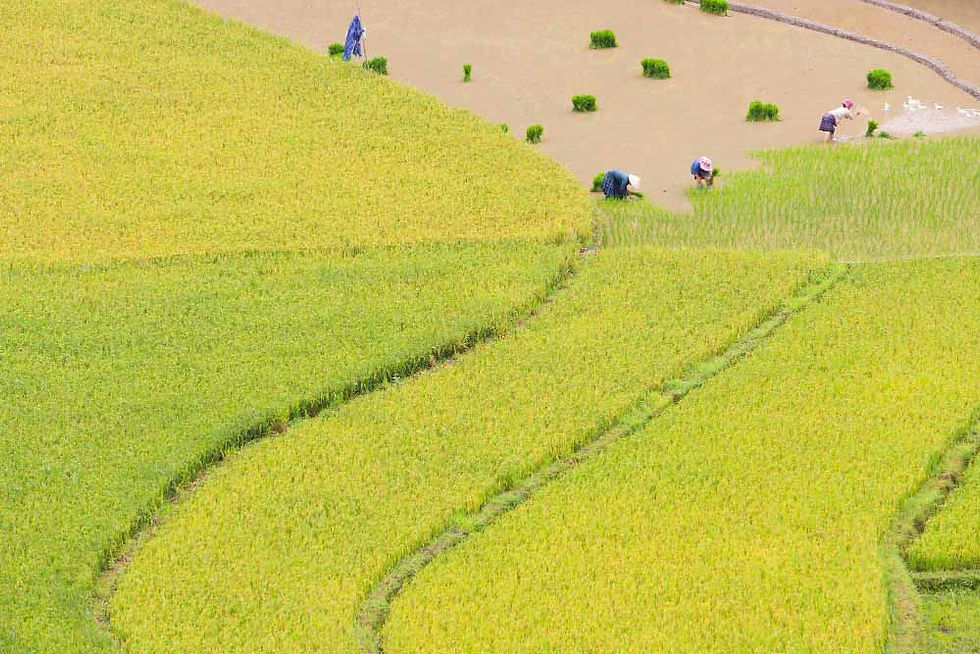🥢 Discover the Savoury Charm of Jangajji: Korea’s Classic Pickled Vegetables
- Withyou
- Jul 15
- 3 min read
If you’re looking to explore traditional Korean cuisine beyond the usual, Jangajji — Korea’s beloved pickled vegetables — is a must-try. These tangy, salty, and refreshingly crisp side dishes have been a staple on Korean tables for centuries, loved for their unique flavour and excellent preservation qualities.

What is Jangajji?
Jangajji refers to vegetables that have been pickled and aged over time in soy sauce, salt brine, fermented soybean paste (doenjang), or Korean chili paste (gochujang). The variety of vegetables used ranges from garlic and chili peppers to eggplant and perilla leaves (깻잎), each bringing its own distinctive taste and texture.
One famous type is doenjang kkaennip jangajji, where perilla leaves are packed in fermented soybean paste during autumn and left to mature through the winter, resulting in a unique, rich umami flavor that is both sharp and refreshing.
Jangajji is not only a delicious side dish but also a traditional preservation method that allowed families to enjoy seasonal vegetables throughout the year, especially during winter months when fresh produce was scarce.
A Delicacy Fit for Royalty
In ancient Korean royal courts, jangajji was known as Janggwa and considered a special delicacy. Even kings, surrounded by exquisite land and sea delicacies, would sometimes lose their appetite. On those occasions, jangajji was served to stimulate their appetite with its bold and savory flavors. This historical esteem shows how treasured jangajji was beyond an everyday side dish.
Types of Jangajji
Garlic Jangajji: Young garlic cloves are soaked in diluted vinegar to mellow their sharpness, then pickled in a sweetened soy sauce brine. The garlic’s crunchy texture and mild sweetness make this a popular choice.
Chili and Perilla Leaf Jangajji: These are pickled in spicy Korean chili paste (gochujang) and seasoned with sesame oil and other spices to create a vibrant and aromatic bite.
Fermented Soybean Paste (Doenjang) Perilla Leaf Jangajji: Perilla leaves (깻잎) are packed in fermented soybean paste (doenjang) during autumn and aged through the winter. This process produces a complex, umami-rich flavor that is highly prized.
Why Jangajji Completes the Korean Table
Even a small amount of jangajji can transform a simple meal into something special. Its salty, tangy, and umami-packed notes perfectly complement plain rice, making it a go-to side dish when other accompaniments are limited. Including a variety of jangajji on the table adds depth and variety, balancing richer or milder dishes with bold flavors.

Health Benefits of Jangajji
As a fermented food, jangajji is packed with beneficial probiotics that support gut health and aid digestion. The fermentation process also increases the bioavailability of vitamins and minerals in the vegetables. Ingredients like chili and fermented soybean paste contribute antioxidants and anti-inflammatory compounds, promoting overall wellness.
Serving Tips
It pairs wonderfully not only with rice but also as a condiment for grilled meats, Korean pancakes (jeon), or hearty stews. Just a little adds tremendous flavor and complexity to any meal.
Seasonal Jangajji Recommendations
Spring: Fresh garlic scape and cucumber jangajji — crisp and refreshing
Summer: Spicy chili jangajji — for a kick of heat
Autumn: Rich doenjang perilla leaf jangajji — perfect for mellow fall flavors
Winter: Deep-flavored garlic and radish jangajji — comforting for cold days
🍚 Ready to Try Making Jangajji at Home?
Making jangajji is simple and rewarding. With just a few ingredients and some patience, you can create these timeless Korean pickles that bring both health benefits and authentic flavors to your table. This summer, try adding homemade jangajji to your meals — a delicious way to connect with Korean tradition and nourish your body.









Comments